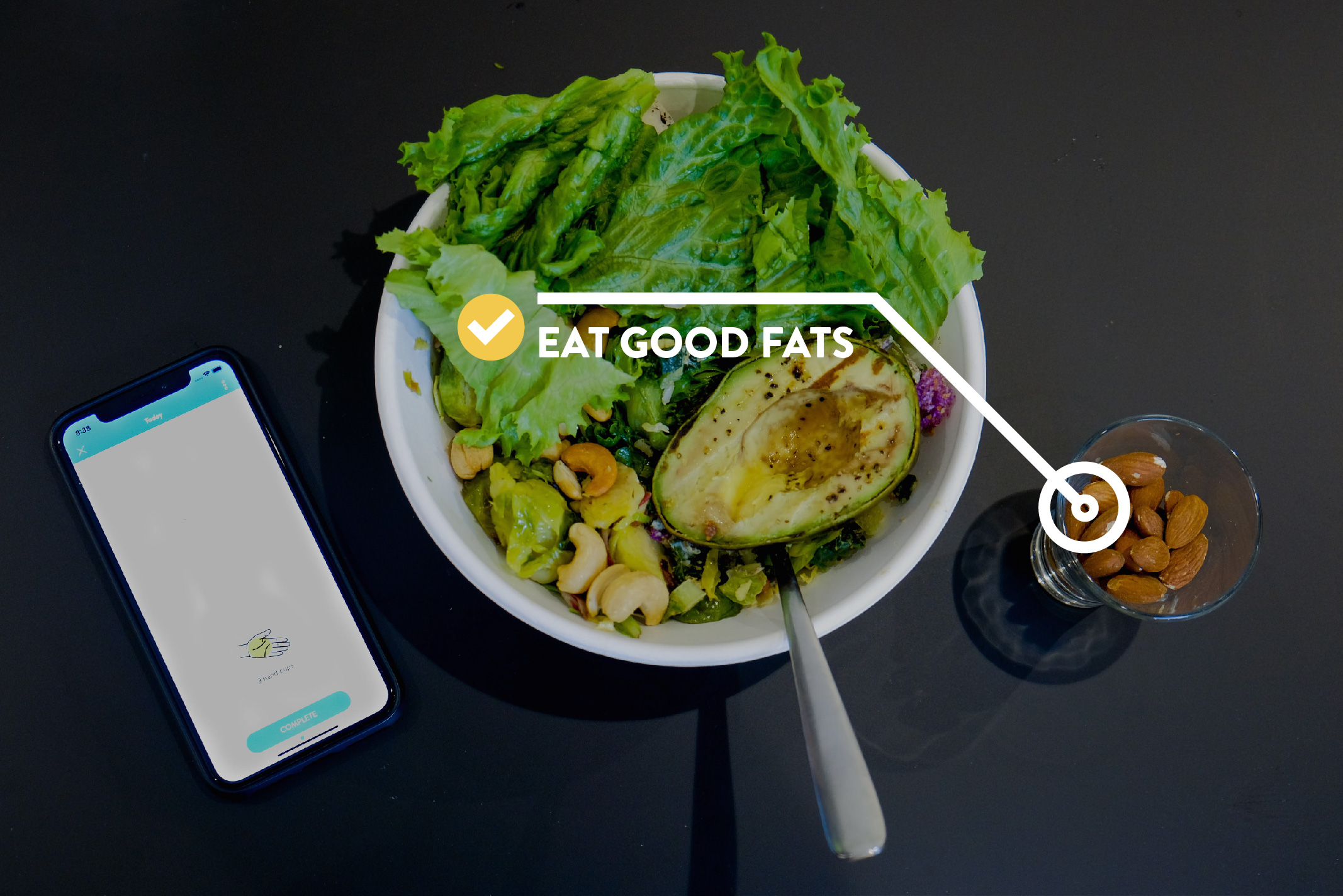The health and fitness industry has a tendency to want to label entire categories of foods as entirely good or bad. There is a missed opportunity when this occurs, because more often than not when it comes to nutrition, the answer is: it depends. This is particularly true when you are speaking about fats.
Fats: the good, the bad, and the ugly
Based on early research into the obesity epidemic in the ’90s, most researchers postulated the high caloric density of fats was the sole contributor to obesity. It turns out that the obesity epidemic is actually multifactorial (decreased physical activity and high-calorie diets), and we are in need of fats to live a healthy life. But not all fats are created equal. This is where we get into the good, the bad, and the ugly facts about dietary fats.
But wait, what do fats do in our bodies?
Fats have several key roles in our bodies, other than just making us feel… well, fat. Yes, fat’s main job is to provide energy for us as it is very dense in calories (lots of calories in little space), and is stored for later use (begrudgingly to anyone battling the bulge).
But wait, there’s more! Fat also has a few side hustles! Being used to make up our brain and nervous system, form our cell membranes, transport fat-soluble hormones (A, D, E, and K), provide a feeling of fullness, and help keep us warm on those cold winter nights. What a busy macronutrient!
What makes fats good or bad?
There are different types of dietary fats. They are classified based on their molecular structure, and their type is related to the length and shape of the carbon chain. In less scientific speak, they are categorized based on the shape of the tail of the fat molecule. Typically good fats have kinks, and bad fats do not.
Saturated fats (bad fats) are straight and because of that structure can be packed very tightly together when in the body. Kind of like a commuter train around rush hour—everyone packs in tight and narrow. This is actually a bad thing since tightly-packed fat in cell membranes are associated with cardiovascular disease, cancer, and other chronic diseases [1] [2]. Unsaturated fats (good fats) with the big bends in their structure are more like commuters with bikes or big bags on trains. These people occupy more room because their shape forces more space between other people and themselves.
This makes trans fats the “ugly” fat
There is currently very little evidence that trans fats have any health benefit, and a heap of research indicating its detrimental effects on human health.3 Trans fats are a bizarre hybrid structure of a saturated and unsaturated fat, and is usually the result of a man-made process called hydrogenation. Essentially industrial food manufacturers haveFrankensteined some fats in foods to give them a better shelf life and desired consistency, but make a monster of any good the fat may have once had. Trans fats will actually take away good high-density lipids in the body, and increase bad low-density lipids,4 which is the root of a lot of cardiovascular diseases.5
Fats: a balancing act
Our bodies need both saturated and unsaturated fats to be the optimum “packedness” for our cell membranes, and other bodily functions. We generally need less saturated fats and more unsaturated fats in our diets. In fact, it is suggested that only 10% of our daily intake of fats is saturated.6 But that being said, yes, we do need to consume some “bad” saturated fats to stay healthy. Currently, minimizing trans fats to zero is suggested.
Most people’s diets these days are largely saturated, hence the focus on eating more “good” unsaturated fats within our daily caloric goals. This means reducing “bad” saturated fat intake.
How to get your clients to eat more healthy fats
The challenge behind getting your clients to introduce this habit is twofold. The first issue is education. Clients need to know what foods have what type of fats in them. For example, does an avocado have saturated or unsaturated fat? (FYI, It actually has both, but predominantly unsaturated fats—more specifically monounsaturated). The second challenge is assisting your client in forming the habit itself.
It is possible to coach overcoming both of these challenges at the same time. With Trainerize, you can use the in-app habit tracking feature with associated habit lessons. This way, your client receives knowledge on how to complete the habit successfully, while also developing the habit itself. You can add educational packages in-app as well through the attachment feature to personalize information to match your training and nutrition philosophies. This way, you have control of the knowledge base your clients build and ensure it’s matched to your coaching preferences.
Eating good fats in a nutshell:
- There are different types of fats based on their structure.
- Fats are necessary for health and well-being.
- Unsaturated fats should comprise roughly 90% of your diet, and saturated fats 10%.
- Trainerize features help educate clients with pre-composed information, and file attachment feature, as well as track habits.
References:
- Barnard ND, et al. Nutrition Guide for Clinicians. 1st ed. PCRM. 2007.
- Mahan LK & Escott-Stump S. Eds. Krause’s Food, Nutrition, & Diet Therapy. 11th ed. Saunders Publishing, Philadelphia, PA. 2004.
- Eller FJ, et al. Preparation of spread oils meeting U.S. Food and Drug Administration labeling requirements for trans fatty acids via pressure controlled hydrogenation. Journal of Agricultural and Food Chemistry 2005;53:5982-5984.
- https://www.ncbi.nlm.nih.gov/pubmed/8527230
- https://www.mayoclinic.org/diseases-conditions/high-blood-cholesterol/in-depth/trans-fat/art-20046114
- https://www.precisionnutrition.com/aa-bad-fats

